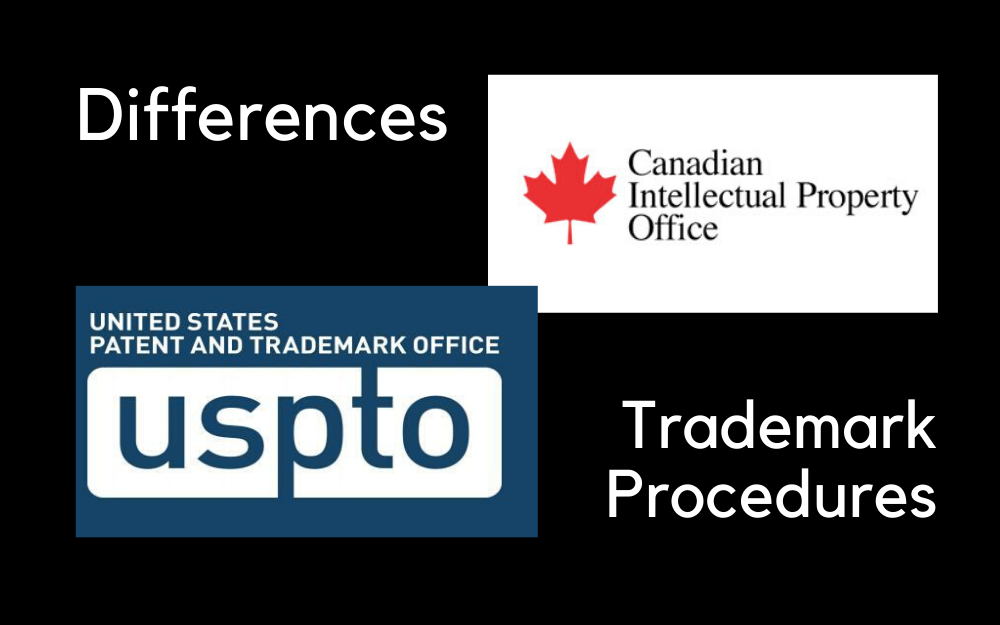The United States and Canada are developed countries and one another’s largest trading partners. There are ties of shared heritage, economically, culturally, and their respective policies towards other nations are closely linked. As both countries have capitalist economies, Intellectual property laws have a significant impact on the economic stakeholders. The countries have similarities in their Intellectual property laws with very few dissimilarities.
The Lanham Act, 1946, and Canadian TradeMark Act, 1954, provides the federal trademark protection and registration rules in the US and Canada, respectively. The acts established the United States Patents and Trademark Office (USPTO) and the Canadian Intellectual Property Office (CIPO) to be the administrative authority over registrations of trademarks. The present Canadian Trade Mark has borrowed specific ideas from both the US and UK regarding providing for the registration of service marks, defining what marks are registrable, and providing for the licensing and assignment of trademarks.
Both countries have a similar trademark procedure with a few differences. The first significant difference is that the US has service marks for marks used for services while a trademark is used for both goods and services in Canada. The other differences are as follows:
Federal Registrations
The US has two registers i.e., a principle called the federal register and supplemental for the individual states. The registration in principle register referred to as the federal registration is available if only a mark is or will be used in interstate or international commerce in the US. Surnames and descriptive marks are registered in supplemental registers.
Canada has only one register, and the criteria for registration into that register is similar to that of principle registers in the US. The trademarks can only be registered in federal even if it is being used in one particular region of the country. Surnames and descriptive marks must be distinctive to be registrable, which can, at times, become difficult to demonstrate. Canada became the 104th member of the Madrid system in 2019. Foreign companies and trademark owners can now seek trademark protection through this system when selling their goods and services in Canada.
Classes
The US has a classification system where goods and services fall into different classes. The applicants need to pay a filing fee for each class in an application. Canada did not have a classification system prior to 2019. The applicants were paying only for one filing fee, notwithstanding the number of goods and services claimed. In 2019, Canada joined the Nice Agreement, which has 45 classes (i.e., 34 product classes and 11 service classes) in order to align closely with its counterparts.
Use
In the US, the applications are based on prior use, intent to use, and any existing foreign registrations. The Canadian trademark required that the applicant had to indicate the prior use of the mark correctly. It was improper to file an application on the bases of the proposed use. The 2019 amendment to the Canadian Trademark act made changes, and demonstration or declaration of use was no longer required to get a registration. After the amendment, applications for both prior used and proposed use of trademarks were accepted. This received disagreement by many as they considered it to be challenging to protect their marks from squatters and infringers. The ‘intent to use’ and ‘use’ came to the same footing in both the countries from 2019.
Division of Applications
The applicants whose applications include both prior use and proposed use of goods and services can ‘split off’ into a parent and a branch in the US. This was in order to provide the applicants with a more comfortable and faster access for obtaining the marks. In Canada, the concept of branch application was not included until the amendment of 2019. They had to be filed separately for prior use, and proposed use as ‘split off’ was not allowed.
Nationwide Protection
The Canadian trademark registration is enforceable in every part of the country. However, in the US as the trademark has to be registered in the federal register for nationwide protection. But, the regional protection is provided if it is registered only in the supplemental register.
Foreign Registration
In the US, foreign registration must be from the applicant’s country of origin, owned by the applicant. In Canada, the applicant relying on a foreign registration must also indicate that the trademark has been used. But, this use need not be in Canada or the applicant’s home country, and it can be in any country. Foreign individuals or business owners and local applicants will be able to extend their international applications using Madrid.
There are no doubts that there exist significant similarities between the trademark laws of Canada and the USA. But, there exist certain dissimilarities concerning its regulations and requirements in the applications. These differences are due to the changes in economic policies and market stakeholders. Addressing these similarities and differences can help global corporations to run operations smoothly in both countries. All countries must consider global cooperation and regulations to bring about the integration of economies for the betterment of all. The taught to be pondered upon is as to whether Intellectual property laws require uniformity around the world.




